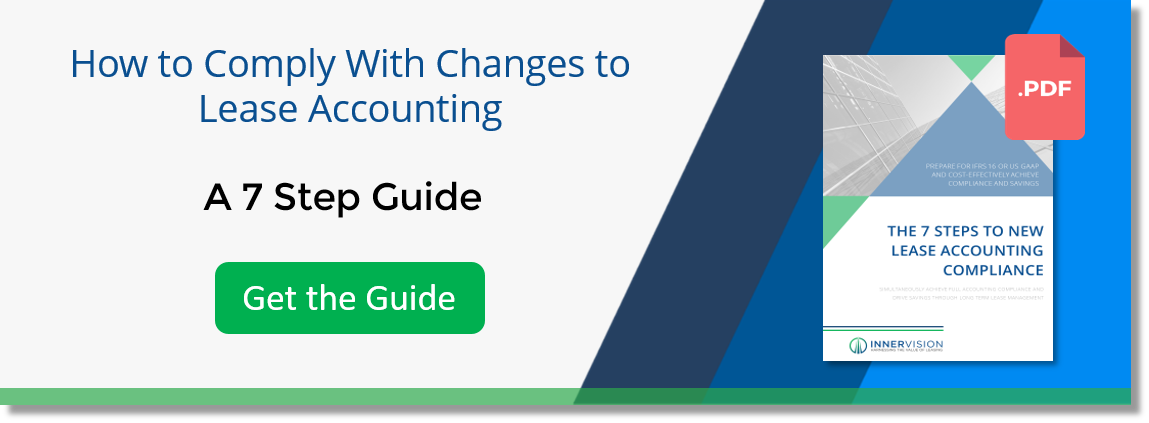What Are The Top Financial Metrics Impacted By The New Lease Accounting Standard – IFRS 16?
Updated 4th September 2024 | 5 min read Published 12th September 2017

The headline financial metric to be impacted by IFRS 16 and the lease accounting standard change is that all leases will be brought on balance sheet.
These changes will obviously have caused quite a sudden intake of breath for all those businesses who rely on having leased assets to function and even more so for companies that have a significant number of operating leases, that under the current accounting standards for leases are accounted for off balance sheet within the footnotes of financial statements.
The International Accounting Standards Board is replacing IAS17 with the new standards (IFRS 16) in order to, provide greater transparency of lease commitments in financial statements and as a means of, essentially, levelling the playing field and ensuring that, in this day and age of businesses using leases for anything and everything, companies can be compared in financial performance equally.
As all leases will be treated similarly to what are currently financial leases, with only a few exceptions, we are all likely to see an increase in net debt, a higher EBITDA and EBIT state, as well as significant impacts to a company’s income statement as well as its reported profit performance, financial ratios, and other performance metrics important to stakeholders, investors and shareholders.
Here’s a little further information on those metrics and a few others which will be impacted by lease accounting changes.
What Financial Metrics Will IFRS 16 Impact?
Some of the metrics…
- Cash Flow
- Balance Sheet as a result of metrics affected therein
- Operating Profit
- Total Assets
- Equity Ratio
- EBITDA
- EBIT
There are, you may be glad to hear, some exemptions to the new legislation which will mean some companies can continue unaffected. After all, the change in standards has come about from the disparity that some companies and industries are using lease agreements as a way of massaging their financial performance whereas others are not. This financial padding causes unevenness in comparisons and makes it sometimes impossible for markets, investors and governing bodies to assess the true financial performance and state of companies.
Cash Flow
If you are a business which presents the interest on leases as part of financing cash flows in your reporting and accounting, the new accounting standards will cause changes. The cash from operations and financing activity outflows will increase as a result of complying with IFRS 16.
If you operate with tight cash flow margins from time to time, or as a matter of course – and then generally, this is especially true for you – you will need to make sure the financial performance of your lease portfolio is as optimised and as favourable as possible. Optimisation is important in order to minimise the impact of redefining what constitutes a lease and how it must be reported.
Balance Sheet
Balance sheets are set to expand under IFRS 16. Effectively, all lease assets together with commitments and liabilities will now have to be present on balance sheet unless they are eligible for exemption and the business chooses to enact this option.
Investors will not welcome sudden increases in balance sheet performance and you will need to plan accordingly (i.e. from now) to make sure that the knock-on effects of IFRS 16 are not so sudden as to be potentially harmful.
Financial KPIs, bonus targets for execs (if applicable), tax payments, debt covenant and the ability to pay dividends could all be impacted as a result of this coming change. This impact further reinforces just how important it is to plan for the changeover and then manage an optimised portfolio after the event.
You may wish to reassess your buy vs lease policy in order to minimise the impact.
Operating Profit
With the distinction between operating leases and finances leases effectively being removed under the new standards, your company needs to be aware of the associated impact on operating profit. Operating Lease payments can no longer be treated as an operating expense.
Total Assets
The new standard is likely to have a significant impact on total assets which are expected to rise, due to the increased recognition of the right of use asset. However, their carrying amount will fall more quickly than the associated liabilities, which may give rise to a fall in equity and similarly operating profit, financial debt and gearing ratios.
Equity Ratio
The changes will also have an impact on equity ratio which is likely to decrease as a result of increased financial debt.
EBITDA
As you’d then expect, Earnings Before Interest, Tax, Depreciation and Amortisation are going to be affected. As a measure of operating performance, this financial metric will see an increase in most cases.
Compared to the IAS 17 standards, an operating expense for leases will be recognised. This, like balance sheet and cash flow, will also have a knock-on effect on KPIs, bonus and targets, lending covenants and perhaps more nuanced financial factors too.
EBIT
Even though EBITDA and EBIT might not be consistent with GAAP, many investors use these as a barometer and internally they may represent management targets. As mentioned in the paragraph above, your metric after depreciation will see an increase under IFRS 16.
Deloitte has produced some case study examples of how IFRS 16 will impact EBIT and EBITDA in this document here.
And this post covers what are some of the ways in which IFRS 16 will impact key financial metrics. It should also be noted the scale of the impact also depends entirely on your business’ own lease portfolio, its performance and your own measurement methods.
If you are dependent on valuation-based investments in order to stay operational, it’s going to be vital that you can have the metrics your investors desire in a shape to inspire confidence and trust. This will be especially true if you are compared to competitors and their own metrics and reports.
A full and proper grasp on what the lease accounting changes mean and how you can make sure to achieve compliance in a way which doesn’t harm accounting and performance is vital.
If you are still in the stage of finding out about what the lease accounting changes entail, take a look at this free document titled IFRS 16 At A Glance.
However, if you are ready to get on the road to achieving compliance, follow the link below to open our 7 Step Guide to IFRS 16 Compliance…
You may also be exploring what role software can play in simplifying the implementation and accounting process. To find out how Innervision’s own lease accounting solution LOIS can help ease the burden of compliance, follow this link.


